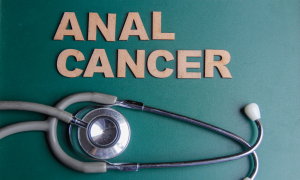
HPV-Related Head and Neck Cancer
You have probably heard that HPV can cause cervical cancer. But did you know that it can also cause cancers of the mouth, tongue, and throat?
HPV—human papillomavirus—is the most common sexually transmitted virus. It has been estimated that 80% or more of sexually active Americans will get HPV sometime in their lives. This means that anyone who has ever been sexually active has a high chance of being exposed to this virus. But only a small number of women, and even fewer men, infected with HPV will ever have any symptoms of disease. In almost all cases, the immune system will keep the virus under control or get rid of it completely.
There are different types of HPV. Some types can cause genital warts, which can appear as fleshy, typically painless, cauliflower-shaped skin growths. Warts are often small and hard to see, though, and can have different appearances: they might be smooth or rough, or large or small. There might be just one wart, or several. The HPV types that cause warts are known as “low risk” because they are almost never found with genital or anal cancers.
Other types of HPV, called “high-risk” types, can cause small cell changes of the penis and anus that the naked eye can’t see. These changes aren’t found very often, though, and penile and anal cancers are very rare.
There is currently no treatment available for the virus itself. However, good treatments do exist for the diseases HPV can cause, such as cell changes or genital warts. Your health care provider will discuss these treatment options with you, if you need them.
Since HPV is so common, even those who have only had one partner can still get the virus. Using condoms correctly each time you have sex reduces the risk of getting sexually transmitted infections, and might offer some protection against HPV. Keep in mind that skin in the anal/genital area not covered by a condom can still be affected.
The best prevention is HPV vaccination. It can prevent both high-risk and low-risk HPV and is recommended for boys and young men (along with girls and young women).
Men are typically screened clinically with a visual inspection to check for lesions (such as warts) – there is no specific way to test directly for HPV in men that is approved for clinical use. Researchers are looking at ways to better screen men, but the current lack of testing options for males can be very frustrating.
While still not routinely done, anyone with a history of receptive anal sex may want to speak with his or her healthcare provider about having an anal Pap test. Anal cancer is uncommon, but screening can still be an important precaution – talk to your provider if you have questions.
Most sexually active couples share HPV until the immune response suppresses the infection. Partners who are sexually intimate only with each other are not likely to pass the same virus back and forth. When HPV infection goes away the immune system will remember that HPV type and keep a new infection of the same HPV type from occurring again. However, because there are many different types of HPV, becoming immune to one HPV type may not protect you from getting HPV again if exposed to another HPV type.
Research has shown that the HPV test may lead to inconsistent results with men. This is because it is difficult to get a good cell sample to test from the thick skin on the penis. Most people will not have visible symptoms if they are exposed to HPV. Therefore, for most, the virus is subclinical (invisible). This is especially true for males.
If a male is exposed to the cell-changing types of HPV, he would be unlikely to have symptoms. If there are no symptoms for males, it is hard to test for it. Most of the time, men will not have any health risks such as cancer with the “high-risk” types of HPV. It is the female’s cervix that needs to be monitored.
As a man, what do you need to know about HPV, human papilllomavirus? This one-page fact sheet covers the basics, including how you can get it, what it can cause, and how you can reduce your risk.
If you are a healthcare provider, check out ASHA’s patient brochure, HPV: A Guide for Men.

You have probably heard that HPV can cause cervical cancer. But did you know that it can also cause cancers of the mouth, tongue, and throat?

There are over 100 different types of human papillomavirus, or HPV. Some types of HPV can cause genital warts and other types can cause cancer, including cancer of the cervix, vulva, vagina, penis or anus, as well as cancer in the back of the throat.

We know that one important way to raise awareness about HPV-related cancer in men is by sharing stories of those who have experienced it. Here we share stories from three men on their experiences with HPV-related cancer.

It can be difficult to talk to family and friends about any cancer diagnosis. It can be helpful to have a team of friends and family for support, but you are in charge of who you tell and how much you tell them.

Anal cancer is a rare cancer, but cases have been on the rise in recent years. Dr. Joel Palefsky answers questions on anal cancer screening and the recent ANCHOR trial.

HPV-related throat cancer is now the most common HPV-related cancer in the U.S. Learn more about symptoms, treatment, and prevention from D r. Michael Moore.

About 4 out of 10 HPV-related cancers occur in men, which means that about 15,000 men get cancers caused by HPV each year.
ASHA believes that all people have the right to the information and services that will help them to have optimum sexual health. We envision a time when stigma is no longer associated with sexual health and our nation is united in its belief that sexuality is a normal, healthy, and positive aspect of human life.
ABOUT
GET INVOLVED
ASHA WEBSITES
GET HELP
© 2025 American Sexual Health Association